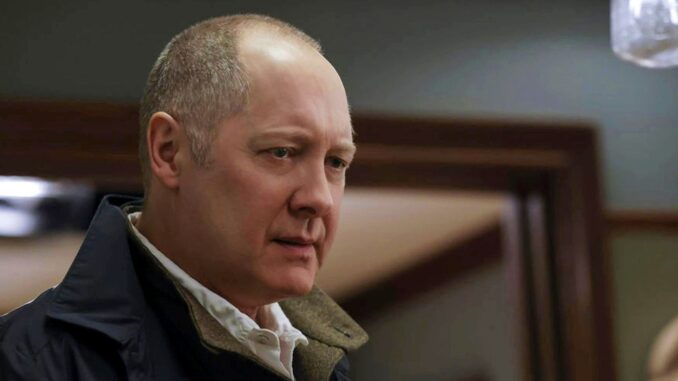
The Blacklist ending may have wrapped up the story of Raymond “Red” Reddington (James Spader), but it didn’t settle the debate among fans about whether the show stuck the landing. For a series that started with a bang – fueled by mysteries surrounding the blacklist itself, the identity of Reddington, and the connection to Elizabeth Keen (Megan Boone) – its final stretch left some viewers frustrated. The ambiguous ending in season 10 received mixed reactions to say the least, with many questioning what the final moments were even meant to mean.
Some fans have speculated that The Blacklist ended the way it did because of network interference – either a surprise cancellation that forced the writers’ hands, or the story being overstretched by too many seasons being ordered. However, according to James Spader himself, this wasn’t the case. While the show’s final moments certainly left room for interpretation, they weren’t the result of a premature shutdown or a last-minute pivot. In fact, Spader has made it clear that The Blacklist wrapped up exactly as planned, and that the team knew well in advance how and when it would all end.
James Spader Confirmed That The Blacklist Ended On Its Own Terms
The Blacklist Ending Was Planned Long In Advance, And James Spader Says The Team Committed To Their Vision
Despite the confusion and mixed reactions surrounding The Blacklist ending, James Spader has been refreshingly candid about how and why the show concluded the way it did. In an interview with AP just ahead of the finale, Spader confirmed that the conclusion was not a result of sudden studio decisions or last-minute changes. In his own words:
“I was very, very glad we were able to end it exactly the way we wanted to end it. It was deliberate and we weren’t taken by surprise in terms of when the ending was going to come.”
That statement goes a long way toward debunking the popular theory that the creative team was blindsided. In fact, Spader made it clear that the production always had a solid plan for how The Blacklist would go out – and they stuck to it. Rather than scrambling for a finale due to unexpected cancellation or network demands, the writers and producers had the time to shape an ending that aligned with their long-term storytelling goals.
James Spader also doubled down on the fact that the finale of The Blacklist was fully intentional, even if fans found it polarizing:
“You’ll see that the ending has conviction and we commit to it.”
That level of confidence is rare for a show like The Blacklist that lasted ten seasons and underwent several major cast shakeups. While the actual execution of the ending – especially the final scenes of “Raymond Reddington: Good Night” – was cryptic, Spader’s comments suggest that ambiguity was by design, not by necessity. It wasn’t about ducking hard answers, but rather presenting a conclusion that reflected the show’s ongoing themes of identity, sacrifice, and mystery.
Ultimately, The Blacklist ending wasn’t driven by business – it was driven by story. That may not have made it any easier for viewers hoping for clear answers, but it does reframe the discussion: this was the ending the creators wanted, not one they were forced into.

The Problems With The Blacklist’s Ending Started Long Before Season 10
The Blacklist Ending Struggled Because Earlier Seasons Set Up Questions The Show Never Truly Answered
While James Spader confirmed that The Blacklist ending was intentional, that doesn’t mean the final season was flawless, or that fans were wrong to be disappointed. In fact, many of the problems with how The Blacklist concluded didn’t begin in season 10, but several years earlier.
The most obvious turning point came in season 8, with the departure of Megan Boone from The Blacklist cast and her character, Elizabeth Keen, being written out of the show. Megan Boone’s exit left a gaping hole at the center of the series, and while the writers tried to pivot, the dynamic between Red and Liz had been the show’s emotional anchor since day one. Without her, The Blacklist lost more than just a character – it lost its core narrative.
After Liz’s death, The Blacklist struggled to redefine itself. New characters came and went, but few carried the same weight. Arcs that once felt focused became meandering, and mythology that once felt intriguing turned into a tangled mess of aliases, false leads, and unresolved questions. The mystery of Red’s true identity, teased since season 1, was kept alive so long that by the time season 10 arrived, many fans had given up hope of a satisfying answer.
Even the structure of The Blacklist became less compelling. The weekly blacklist cases felt increasingly disconnected from the overarching story. Plotlines that once promised major revelations – like the origins of the blacklist, the significance of the Cabal, or the truth about Katarina Rostova – were either abandoned or answered in ways that only deepened confusion. As the seasons went on, The Blacklist became a series more about preserving its mystique than resolving it.
So when The Blacklist ending finally came, it had to contend not only with wrapping up a ten-season arc, but with the weight of years’ worth of narrative drift. It’s no surprise that the final episodes, though carefully planned, felt anticlimactic to some viewers. Even if The Blacklist ended on its own terms, the foundation had already started to crumble.
